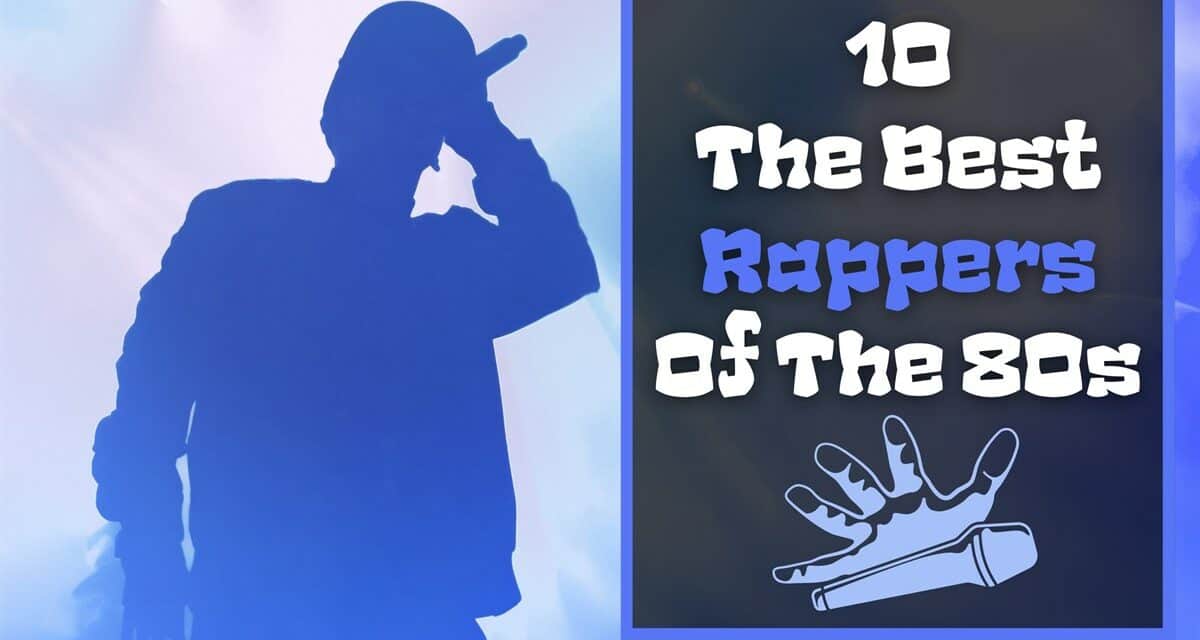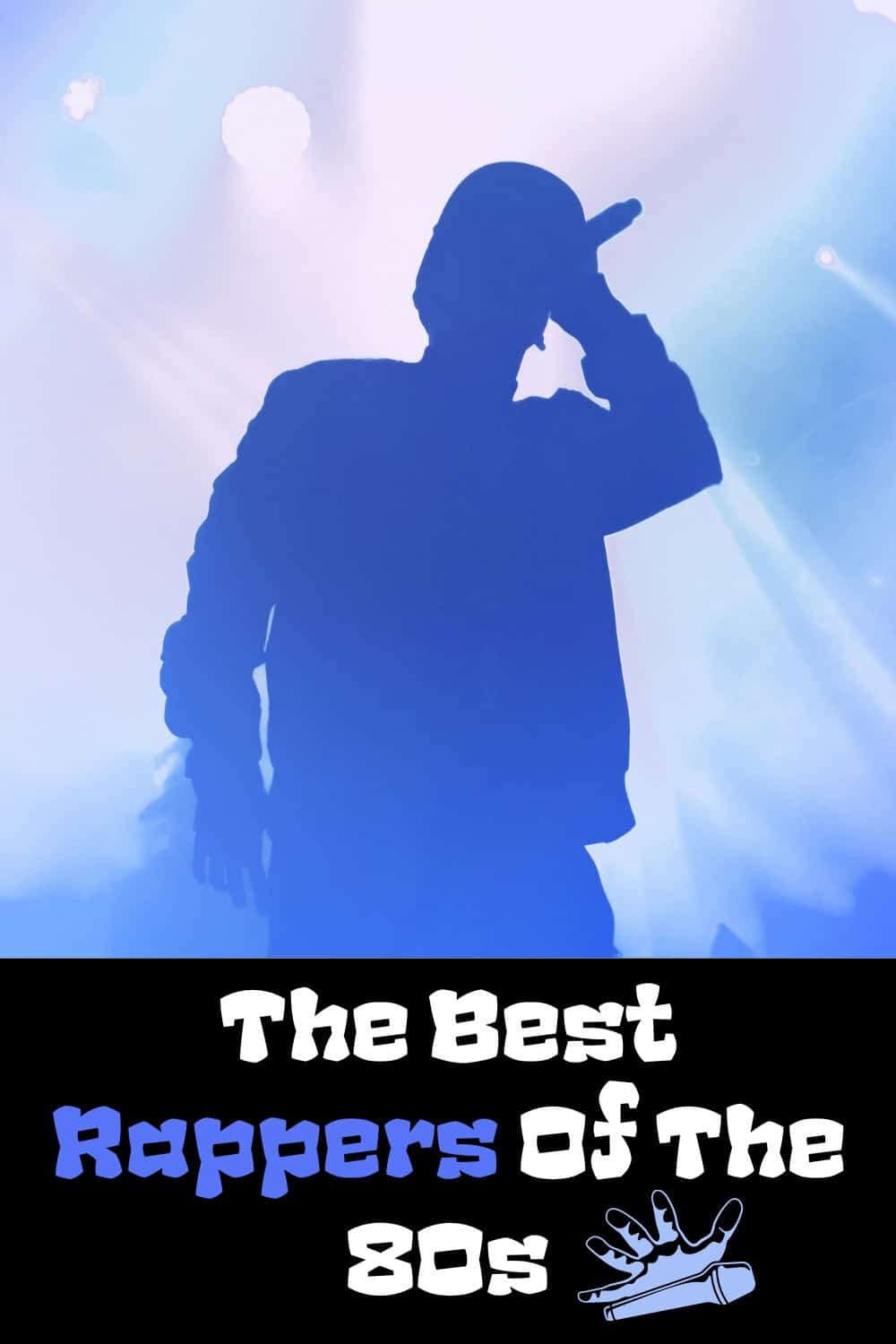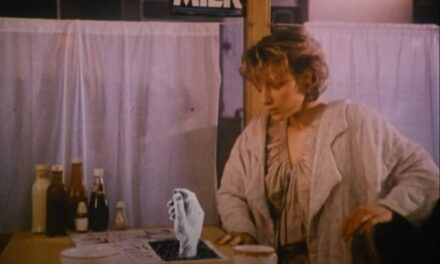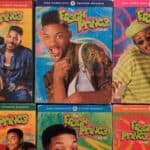The 80s were a time of great technological advances and cultural change. There are countless new elements that the decade brought, but one of the most remarkable is undoubtedly its music, which is still widely consumed today.
It was the era of genre diversification, the birth of new styles and artists more focused on the lyrical and metaphorical aspects of their lyrics, the development of more complex beats, and, in short, the expansion of the hip-hop movement worldwide.
Although genres such as Pop and Rock are usually the most representative of the decade, we cannot forget the best 80s rappers, who formed the Golden Age of Hip Hop.
Since the 60s, some artists had already made some incursions into rap, but it was not until 1979 that Sugarhill Gang marked the official beginning of the genre with their hit “Rapper’s Delight” which quickly became the first rap song to reach the top 40 of the Billboard Hot 100.
This gave way to new artists and groups that ended up laying the foundations of the genre, characterized by its messages of social criticism of the system and the harsh reality that lived in the streets. These are
The Best Rappers Of The 1980s
DJ Jazzy Jeff & the Fresh Prince (1985)
We start with a duo that absolutely everyone knows. When he was trying to gain recognition in West Philadelphia, the iconic Will Smith under his stage name The Fresh Prince, met DJ Jeff Townes (DJ Jazzy Jeff) and the rest is history.
It was a pairing destined for success that later added Clarence Holmes (Ready Rock C) as the group’s beatboxer, forming a trio albeit only for a few years.
Though the stars were always the rapper and the DJ. Will was known for telling funny stories in the lyrics of his songs, something that made him popular even before he finished high school.
For his part, Townes had a great technique at the mixing desk, being considered by many the father of transforming, a style of scratching.
After the moderate success of their first album “Rock the House” and a big tour with groups like Run DMC, Public Enemy, and others, the DJ and the Prince touched the sky in 1988 with their album “He’s the DJ, I’m the Rapper”, whose presentation single “Parents Just Don’t Understand” won the first Grammy award for a hip hop/rap song.
The next few years, the duo took a back seat, mostly because Will was starring in “The Fresh Prince of Bel-Air,” but their stint in the music industry did the rap scene a big favor.
Salt-N-Pepa (1985)
Rap is usually more associated with men, especially in its early days, but the trio Salt-N-Pepa came along to show that women also had things to say and with a lot of flow.
Cheryl James (Salt) and Sandra Denton (Pepa) joined their paths through nursing, but it was rap that made them inseparable friends. On one of their student wanderings, they ended up making a song called “The Showstopper” for a Hurby Azor music assignment.
That modest tune soon found its way to national radio, kicking off the artistic career of the female musical duo with the later addition of Deidra Roper (DJ Spinderella).
Fun, sassy and lively, Salt-N-Pepa rocked the masses with their style that mixed pop with rap.
Their big hit was the song “Push It”, which as its name suggests, talked about intimate acts, but in a highly entertaining way because that’s what the duo was looking for, to change the sexist image of hip hop and raise their voices about what they think about men.
Upon being nominated for a Grammy, Push It “pushed” sales of their album “Hot, Cool & Vicious” to one million units, making Salt-N-Pepa the first female rappers of the 80s to go platinum.
The Sugarhill Gang (1979-1985)
We return to this iconic group that despite not having achieved another hit like “Rapper’s Delight”, they were a revolution for the genre.
Its true popularity is cultural, as it is not only an excellent rap song, but also happens to be at the historical moment when hip-hop culture spread to the streets of New York, which for years had been enjoying the rhythmic chatter of the MCs, the precursors of rap music who were only limited to demonstrating their skills at parties or social gatherings.
Wonder Mike, Big Bank Hank, and Master Gee set precedents by officially recording a rap track, and boy, did they motivate party rappers to step into the mainstream spotlight.
Throughout the 1980s, The Sugarhill Gang never again rocked American radio. The opposite was the case in the U.K., where tracks like Apache, Eighth Wonder, and Showdown were sensations.
Although the group temporarily disbanded in 1985, their legacy lived on in the hip-hop culture that enjoyed “Rapper’s Delight”.
Public Enemy (1982)
Led by Chuck D (Carlton Ridenhour), a graphic design student, Public Enemy was characterized by using rap as a tool for their political speech against African-American repression.
The group was born in 1982 as a conglomerate of producers, publicists, disc jockeys, and rappers. Quickly, record producer Rick Rubin offered them a contract with the label he was starting up, Def Jam. His offer, despite Chuck’s initial reluctance, was accepted and a powerful rap legend was born.
After an excellent first rap album, the group was finally consecrated with “It Takes a Nation of Millions to Hold Us Back”, an album acclaimed by critics and the public, who did not hesitate to point it out as an innovative phenomenon that consolidated Rap as an authentic art.
This caught the attention of director Spike Lee, whose films are always loaded with social criticism, and found in Public Enemy what he needed for his next film “Do The Right Thing”. The track “Fight The Power” not only fit perfectly into the 1989 film but transcended barriers to become an anthem of hip-hop culture.
Truth like fists, furious attacks against stupidity, inequality, and injustice, and simple but brutal music. Pure and simple Public Enemy.
Beastie Boys (1978)
What would happen if you mixed Rap with Rock? It sounds crazy, but that’s what the Beastie Boys were all about, one of the most unique hip-hop bands that mixed different genres in an irreverent way, becoming one of the most influential groups of the decade.
Although the 90s were their golden age, they were born in the 80s under the Dej Jam label. Their first album, “Licensed To Ill” released in 1986, is considered the best debut album of all time by the prestigious Rolling Stone magazine. And when you have songs as emblematic as “Fight For Your Right (To Party)”, “No Sleep Till Brooklyn” and “Brass Monkey”, it is difficult not to achieve success.
Likewise, the Beastie Boys awakened a wave of teenage rebellion and a touch of anarchy that sounds bad but let’s face it, we’ve all been there. The Beastie Boys were nothing more than the spokesmen of a teenage feeling that in turn saw the band as a way to let off steam.
Over the years various artists have passed through the group, but Michael Diamond (Mike D), Adam Horovitz (Ad-Rock), and Adam Yauch (MCA) will always be remembered as the founders of a movement hated by parents but loved by young people.
Run-D.M.C. (1981)
Joseph Simmons (DJ Run), Darryl McDaniels (D.M.C), and Jason Mizell (Jam Master Jay) are the members of this American hip hop trio that at first used more minimalist melodies, but after their first single “Sucker MC’s” in 1983, they began to add some rock to their tracks.
Despite the huge artistic explosion of the time, they won over young, urban audiences like no one else had ever done, with songs that sound fresh to this day.
In addition, they helped popularize rap music among white American audiences with their 1986 hit song “Walk This Way,” which was a collaboration with Aerosmith.
They were the first Hip Hop group to achieve a Gold Record, a Platinum Record, a Multi-Platinum Record, and a Grammy nomination, among many other accolades. In addition, they were the first rappers ever to appear in a video clip on MTV with their hit “Rock Box in 1984” and also the first rap artists to star on the cover of a Rolling Stone magazine.
And still to come, because they were also the first rap group to be sponsored by an international clothing line like Adidas.
These guys were the first in everything.
Eric B. & Rakim (1986)
Formed by William Griffin (Rakim) and Eric Barrier (Eric B.), this duo shook up the hip-hop industry in the late ’80s, being considered as the first great DJ/MC duo, standing out both dually and individually.
With their 1986 debut single, “Eric B. is President” and their first albums “Paid in Full”(1987) and “Follow the Leader (1988) under the label of innovative producer Marley Marl, the duo became a major influence on later MC’s, who valued above all Rakim’s revolutionary rap style, which was seemingly simpler and smoother, although complex rhymes were not lacking.
Another of his hits, “Microphone Fiend” (1988), is a rap standard and a trademark of Rakim’s style. The song refers to an addiction to illicit substances, creating a parallel between that theme and Rakim’s inability to detach himself from the microphone. Messages like these became rap milestones in the 80s, and continue to exert a lot of influence today.
LL Cool J (1984)
At just 16 years old, James Todd Smith signed to the Def Jam label to become one of the best rappers of all time. That’s right, we’re talking about the legendary LL Cool J (“Ladies Love Cool James”).
In 1985, “Radio” was released, an album that was highly praised by the media and went on to sell over 1,500,000 copies, earning him his first platinum album. This material included songs such as “I Can’t Live Without My Radio” and “Rock the Bells”.
From that moment on, the artist released an innumerable amount of hits, being one of the few rap musicians that lasted for more than 2 decades with a huge number of fans, which places him among the most influential personalities in the history of Hip Hop.
But that’s not all, as he also ventured into the world of acting in films such as Toys, Halloween H20: 20 Years Later, and Charlie’s Angels but his most recognized role is in the hit series NCIS: Los Angeles.
With a more hardcore rap style in tracks like “I Can’t Live Without My Radio” or “I Need A Beat”, and some genre-hopping in romantic ballads, LL Cool J is one of the most acclaimed Hip Hop artists in the industry and one of the pioneers of pop-rap. Just knowing that he has released 13 albums, more than thirty singles, and two Grammys is enough to recognize the greatness of this Rap legend.
KRS-One (1986)
A thousand years and hundreds of new and innovative rappers may pass, but KRS-One will always be “The Teacha” of the MCs. The history of Hip Hop cannot be understood without this great icon, who with his political and social discourse won the hearts of thousands.
Before becoming a legend, Lawrence Parker had a complicated childhood in New York, leaving home only at the age of 16. But when his future was looking bleaker, he found hope in hip-hop culture. During his stay in a community shelter, he crossed paths with Scott Sterling (DJ Scott La Rock), with whom he created the rap group Boogie Down Productions.
One of the many qualities for which KRS-One is so iconic is for blending rap with Jamaican music, representing wisdom and a more peaceful approach, especially after the tragic death of Scott La Rock in a shooting.
After that tragedy, the Boogie Down Productions group did not fall apart. On the contrary, new members joined to support KRS-One in its humanistic mission of imparting wisdom and unifying messages through rap.
Representing the true essence of an MC, “‘K’nowledge ‘R’eigns ‘S’upreme ‘O’ver ‘N’early ‘E’veryone” goes down in history as one of the most supportive artists in hip hop both musically and socially, and one of the best 80s rappers of all time.
N.W.A. (1986)
If rappers were supposed to become famous for the social criticisms of their songs, it’s quite curious that N.W.A got in so much trouble for it.
Consisting of Ice Cube, MC Ren, Eazy-E, Yella, Dr.Dre, and Arabian Prince, N.W.A was a historic Hip Hop group born in Compton in 1986. They are recognized as the founder of Gangsta Rap, a musical subgenre focused on the themes of the violent life and delinquency of suburban youth.
The group’s activity was disrupted due to the violence in their lyrics which drew the attention of the FBI itself. Their songs were criticized for being too explicit and were even censored on the most popular radio stations in the United States. But not even that prevented the albums of social commitment, full of criticism and vindication, from selling more than 10 million units.
Some of their most emblematic songs are “Fuck tha police”, where they protested against police brutality, “Express Yourself”, where they claim freedom of expression in rap, and “Gangsta Gangsta”. These gems are part of their 1988 debut album, “Straight Outta Compton”, which catapulted them to fame despite their continuous controversies.
N.W.A. disbanded just 5 years after its creation, although that short time was enough to revolutionize the genre and the youth, who saw them as their spokespersons that made evident the painful reality in which they lived.
With this list of great names, it is not surprising that many experts place the 80s as the beginning of the so-called “Golden Age of Hip Hop”. Those years were the prelude to the glorious period that saw the birth of new legends in the history of rap: the 90s.










